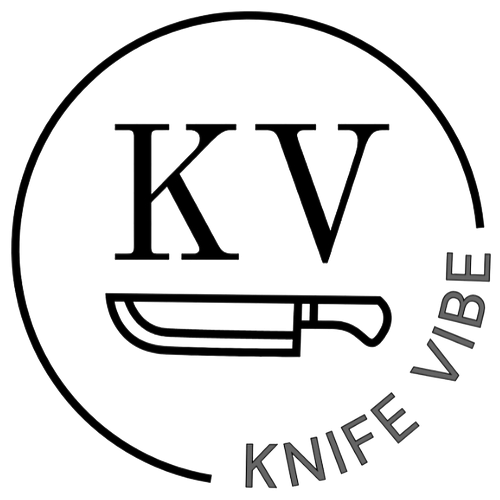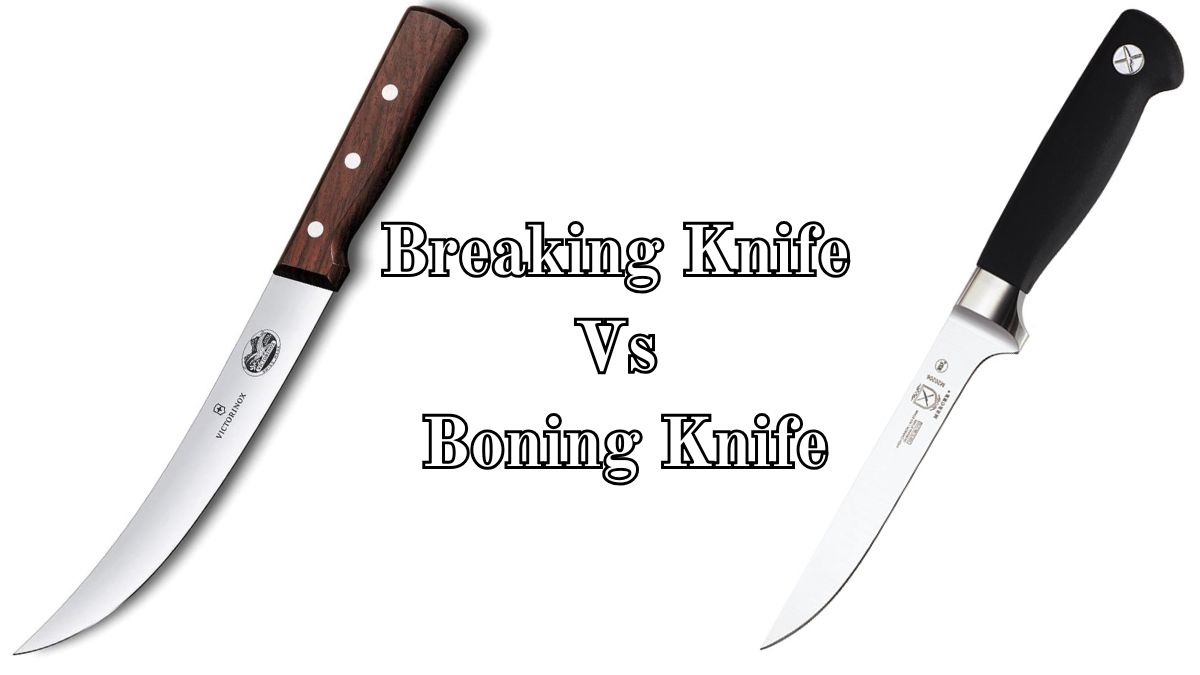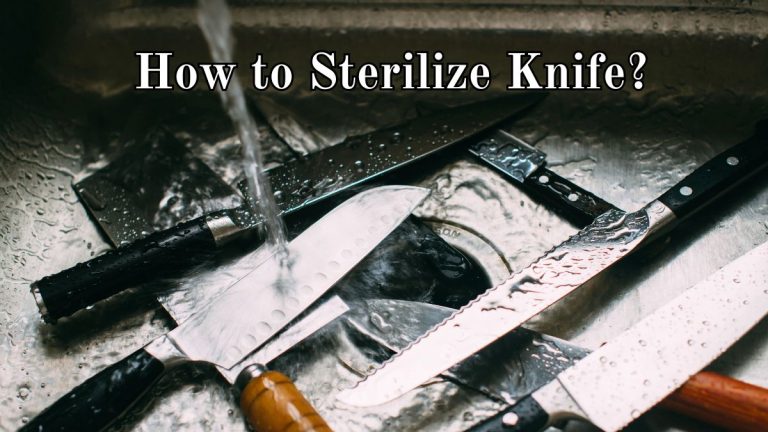Breaking Knife Vs Boning Knife: Ultimate Kitchen Tool Showdown
In the kitchen, knives are essential tools. Each type has a unique purpose.
Breaking knives and boning knives serve different functions. Knowing their differences can improve your cooking skills. Breaking knives are used for cutting through large pieces of meat. They have a sturdy, curved blade. On the other hand, boning knives are designed for precision.
They help in removing bones from meat and fish. Their thin, flexible blade allows for detailed work. This comparison will help you choose the right knife for your needs. Understanding their uses can make meal preparation easier and more efficient. Dive in to learn which knife suits your cooking style best.
Introduction To Kitchen Knives
Kitchen knives are essential tools for any home cook or professional chef. Choosing the right knife can make a big difference in your cooking experience. Two of the most important knives are the breaking knife and the boning knife. Understanding their differences can help you decide which one to use for your culinary tasks.
Different Knife Types
Many types of kitchen knives exist, each designed for specific tasks. Here are some of the most common:
- Chef’s Knife: Versatile, used for chopping, slicing, and dicing.
- Paring Knife: Small, used for peeling and intricate work.
- Serrated Knife: Perfect for bread and tomatoes.
- Boning Knife: Ideal for removing bones from meat.
- Breaking Knife: Designed to break down large cuts of meat.
Importance Of Choosing The Right Knife
Using the right knife enhances your cooking efficiency and safety. Each knife has a specific design to handle particular tasks better than others. For example, a boning knife is thin and flexible, making it perfect for removing bones and skin. A breaking knife, on the other hand, is strong and curved, designed to break down large pieces of meat.
Let’s compare their key features:
| Feature | Boning Knife | Breaking Knife |
|---|---|---|
| Blade Shape | Thin, pointed | Curved, sturdy |
| Flexibility | Flexible | Less flexible |
| Primary Use | Deboning meat | Breaking down large cuts |
Choosing the right knife ensures you perform tasks efficiently and safely. Always select a knife that matches the task at hand. This reduces the risk of accidents and improves the quality of your cuts.

Breaking Knife Overview
In every kitchen, having the right knife is essential. A breaking knife stands out for its unique design and specific uses. Let’s dive into the details of this versatile tool.
Design And Features
A breaking knife typically has a curved blade. This shape helps in making precise cuts. The blade is also stiff, which provides strength. The handle is ergonomic, ensuring a firm grip. These features make it perfect for heavy-duty tasks.
Common Uses In The Kitchen
The breaking knife excels in breaking down large cuts of meat. It slices through tough tissue easily. It is also used for trimming fat. Many chefs prefer it for its versatility. It can handle both delicate and tough cuts. The breaking knife is a must-have for meat lovers.
Boning Knife Overview
A boning knife is an essential tool in any kitchen. It is designed to remove bones from meat, poultry, and fish. This knife has a unique design that sets it apart from other kitchen knives.
Design And Features
The design of a boning knife is distinct. It has a narrow, sharp blade that can be either flexible or stiff. The blade length usually ranges from 5 to 7 inches. The flexibility allows it to maneuver around bones with ease. The handle is ergonomically designed for a comfortable grip. This ensures precision and control while cutting.
| Feature | Description |
|---|---|
| Blade Length | 5 to 7 inches |
| Blade Type | Narrow, sharp, flexible or stiff |
| Handle Design | Ergonomic for comfortable grip |
Common Uses In The Kitchen
A boning knife is used for various tasks in the kitchen. Here are some common uses:
- Deboning Meat: Efficiently removes bones from beef, pork, and lamb.
- Fileting Fish: Ideal for cleanly removing fish fillets.
- Trimming Fat: Perfect for trimming fat and sinew from cuts of meat.
- Poultry Preparation: Useful for deboning chicken and turkey.
This knife makes precise cuts, reducing meat waste. It also ensures a clean, professional presentation.

Credit: www.amazon.com
Key Differences
When choosing between a breaking knife and a boning knife, it is important to understand their key differences. Each knife has unique features and uses, making them essential tools in the kitchen. Let’s explore the main differences between these two types of knives.
Blade Shape And Flexibility
The blade shape and flexibility of a breaking knife differ from those of a boning knife. Breaking knives have a wide, curved blade. This shape allows for smooth slicing through meat. The blade is usually stiff, giving more control when cutting large pieces of meat.
On the other hand, boning knives have a narrow, pointed blade. This design is ideal for precise cuts around bones. Boning knife blades can be flexible or stiff. Flexible blades are perfect for delicate tasks, such as removing fish skin. Stiff blades are better for tougher meats like beef or pork.
Handle And Grip
The handle and grip of each knife also have distinct differences. Breaking knives typically have a larger handle. This design offers a secure grip, crucial for cutting through thick meat. The handle is often textured to prevent slipping, even when wet.
Boning knives usually have a smaller, ergonomic handle. This allows for better maneuverability and precision. The handle design can include finger guards, enhancing safety during intricate cuts. Both knives prioritize comfort, but their handles cater to different cutting techniques.
In summary, understanding the differences in blade shape, flexibility, handle, and grip helps in choosing the right knife for your needs. Whether you are cutting large pieces of meat or making precise cuts around bones, each knife has its unique advantages.
Performance Comparison
Choosing the right knife makes a big difference in the kitchen. Breaking knives and boning knives each have unique uses. Let’s compare their performance.
Cutting Efficiency
Breaking knives excel in cutting through large pieces of meat. Their curved blades slice through flesh with ease. This makes them perfect for cutting steaks or roasts. Boning knives, on the other hand, are designed to separate meat from bone. Their thin, sharp blades work well in tight spaces. This makes removing bones a breeze.
Precision And Control
Boning knives offer great precision. They allow for detailed work around bones and joints. Chefs use them to create clean cuts without wasting meat. Breaking knives provide less control for detailed work. They are better suited for large, broad cuts. This makes them ideal for breaking down whole animals.
In summary, both knives have their strengths. The choice depends on the task at hand. Using the right knife improves efficiency and precision in your cooking.
Maintenance And Care
Maintaining your knives is essential for ensuring their longevity and performance. Both breaking and boning knives require proper care to stay sharp and effective. This section will guide you through the essential steps for maintaining and caring for your knives.
Sharpening Techniques
Sharpening your knives regularly is crucial. Use a whetstone for precise sharpening. Hold the knife at a 20-degree angle. Move it back and forth along the stone. For a breaking knife, focus on the curved edge. For a boning knife, sharpen the entire blade evenly. Finish with a honing rod to align the edge.
Storage Tips
Proper storage prevents damage to your knives. Use a knife block or magnetic strip. Avoid tossing knives in a drawer. This can dull the blades. Store them in a dry place to prevent rust. Consider using blade guards for extra protection. Keep knives out of children’s reach.
Choosing The Right Knife
Selecting the right knife can greatly improve your cooking experience.
Whether you are a professional chef or a home cook, the correct knife makes a difference.
Two common knives are the breaking knife and the boning knife.
Understanding their uses helps you make an informed choice.
Factors To Consider
Several factors influence your choice between a breaking knife and a boning knife.
Here are some key considerations:
| Factor | Description |
|---|---|
| Blade Design | Breaking knives have a curved blade for slicing large cuts of meat. Boning knives have a thin, flexible blade for removing bones. |
| Blade Length | Breaking knives are usually longer, around 10-12 inches. Boning knives range from 5-7 inches. |
| Flexibility | Boning knives are more flexible, ideal for precise cuts. Breaking knives are sturdier, suitable for tougher tasks. |
| Purpose | Breaking knives are used for breaking down large pieces of meat. Boning knives are used for removing bones and skin. |
Personal Preferences
Your personal preferences also play a role in choosing the right knife.
Consider these aspects:
- Comfort: Choose a knife that feels comfortable in your hand.
This reduces fatigue during extended use. - Weight: Some prefer heavier knives for stability.
Others like lighter knives for better control. - Material: Stainless steel blades are durable and easy to maintain.
High-carbon steel blades are sharper but require more care. - Handle Design: Ergonomic handles provide a better grip.
This enhances control and safety.
By considering these factors and your personal preferences, you can choose the knife that best suits your needs.
Whether it’s a breaking knife for large tasks or a boning knife for precise work, the right tool makes all the difference.
Frequently Asked Questions
What Is A Breaking Knife Used For?
A breaking knife is used to break down large meat cuts. It’s perfect for cutting through cartilage and small bones.
What Is A Boning Knife Good For?
A boning knife is ideal for removing bones from meat, poultry, and fish. Its thin, flexible blade allows precise cuts.
Can You Use A Boning Knife For Breaking?
Using a boning knife for breaking is not recommended. It’s designed for precision, not for cutting through bones.
How Do You Choose Between Breaking And Boning Knife?
Choose a breaking knife for larger cuts and bones. Opt for a boning knife for precise, detailed work.
Conclusion
Choosing the right knife makes cooking easier and more efficient. Use a breaking knife for slicing meat and breaking down larger cuts. For detailed work, a boning knife excels at removing bones and skin. Both knives have unique strengths. Understanding their differences helps you select the best tool for the job.
Happy cooking!






